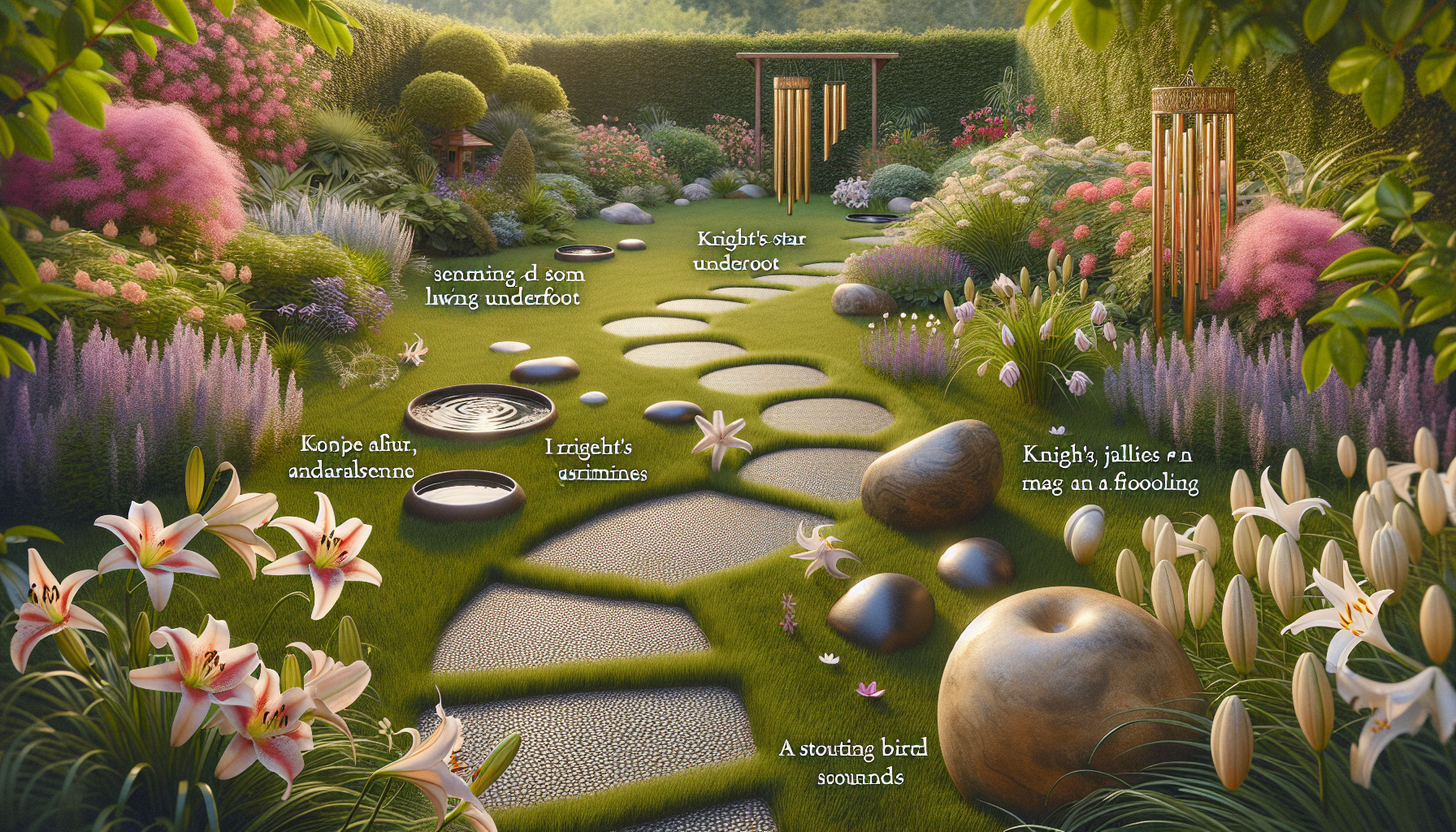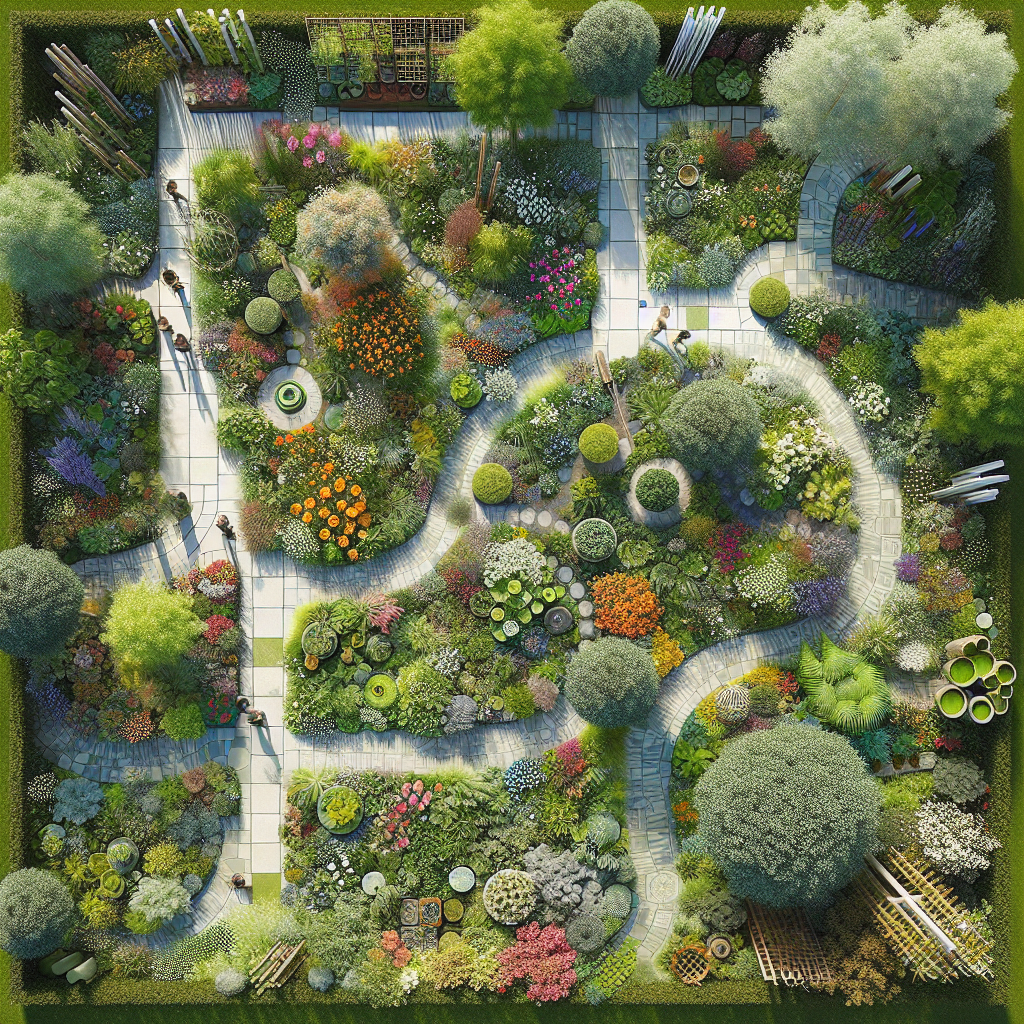Sensory gardens are becoming increasingly recognized for their therapeutic and educational value. These specially designed spaces offer a unique environment that stimulates the senses—sight, smell, touch, taste, and hearing—through the use of specific plants and garden elements. In this article, we will explore the myriad benefits of sensory gardens and how they contribute to overall sensory health.
What is a Sensory Garden?
A sensory garden is an inclusive, accessible garden space that is designed to engage the sensory system. By incorporating a diverse range of plants and materials, these gardens provide a rich sensory experience. Sensory gardens are not only a source of beauty and enjoyment but also serve as a therapeutic space for individuals of all ages, particularly those with sensory processing disorders, developmental disabilities, or mental health conditions.
Therapeutic Advantages of Sensory Gardens
Sensory gardens are known for their therapeutic qualities. The integration of various plants and elements can have a calming effect, reduce stress, and improve mood. For individuals with sensory health issues, these gardens offer a safe and nurturing environment to explore and engage with the senses at one’s own pace.
Cognitive Benefits
Interacting with different sensory stimuli in gardens can enhance cognitive development. It encourages curiosity and the desire to explore, which in turn stimulates learning. Sensory gardens can also support memory retention and concentration, making them beneficial for individuals across the lifespan, including those with cognitive impairments.
Physical Health
Sensory gardens often include elements that encourage movement, such as paths, bridges, and textured surfaces. Engaging with these features can promote physical fitness and improve fine and gross motor skills. The act of gardening itself can be a form of physical exercise, beneficial for maintaining muscle strength and flexibility.
Emotional and Mental Well-being
The therapeutic nature of sensory gardens can be particularly impactful for emotional and mental health. The peacefulness of the garden environment can provide a respite from the stresses of daily life, potentially reducing symptoms of anxiety and depression. For individuals experiencing sensory overload, these gardens can offer a tranquil space to decompress and regain a sense of balance.
Social Interaction
Sensory gardens are communal spaces that encourage socialization. They provide opportunities for interaction, communication, and the development of social skills. For individuals with autism or social anxiety, the non-threatening environment of a sensory garden can be especially inviting for practicing and enjoying social engagement.
Design Elements of Sensory Gardens
Creating a sensory garden involves thoughtful design and the selection of elements that appeal to the different senses. Here are some components that are commonly found in sensory gardens:
- Plants and Flowers: A variety of plants with different textures, colors, and scents can stimulate sight, touch, and smell. For example, lavender and rosemary offer calming scents, while brightly colored flowers like marigolds attract the eye.
- Water Features: The sound of water from a fountain or stream can be soothing and provide auditory stimulation.
- Texture Pathways: Pathways with different materials such as gravel, wood chips, or smooth tiles, engage the sense of touch and can also influence proprioception.
- Edible Plants: Incorporating herbs, fruits, and vegetables can engage the sense of taste and encourage healthy eating habits.
- Interactive Elements: Wind chimes, tactile sculptures, and garden instruments allow for active interaction with the garden space.
Implementing Sensory Gardens in Various Settings
Sensory gardens can be implemented in a variety of settings, from residential backyards to public parks, schools, and healthcare facilities. For instance, they can be particularly effective in pediatric care, helping children to develop sensory integration skills. They also play a role in senior care, providing a gentle and stimulating environment for older adults.
Sensory Gardens and Learning Environments
Educational settings can greatly benefit from the inclusion of sensory gardens. These gardens serve as dynamic, hands-on learning environments where students can apply lessons in science, ecology, and art. They also support multisensory learning environments, which have been shown to enhance understanding and retention of information across various subjects.
Best Practices for Sensory Garden Design
When designing a sensory garden, it is important to consider the needs of the intended users. A well-designed sensory garden should be accessible to individuals with different mobility levels and sensory sensitivities. It should offer a variety of experiences but also areas of retreat for those who might become overwhelmed.
Inclusivity is key, ensuring that the garden can be enjoyed by people with varying abilities and preferences. Utilizing non-toxic plants and materials is also crucial for safety, particularly in settings where children or vulnerable populations will be present.
External Resources for Further Reading
To better understand the impact of sensory gardens, here are some niche and specific resources:
- The Therapeutic Landscapes Network provides in-depth information on the healing aspects of landscapes and gardens.
- The Sensory Trust offers guidance on creating accessible and engaging sensory environments.
- Research on the benefits of green spaces on mental health from the American Psychological Association.
- A study on horticultural therapy and its impact on health provides scientific insights into the healing effects of gardening.
Conclusion
Sensory gardens are a testament to the power of nature’s ability to heal and enrich our lives. They offer a multitude of benefits, from therapeutic and educational to aesthetic and recreational. By providing a multisensory experience, sensory gardens help individuals develop sensory integration skills, support mental and emotional well-being, and encourage physical activity.
Incorporating a sensory garden into community spaces, schools, and healthcare settings can have a profound impact on individuals and society as a whole. As we continue to recognize the importance of sensory health in our lives, sensory gardens will undoubtedly play a crucial role in promoting holistic well-being.



